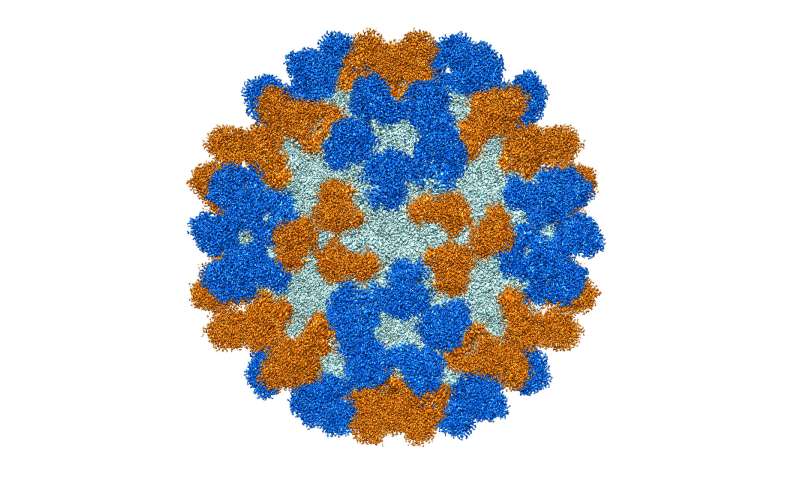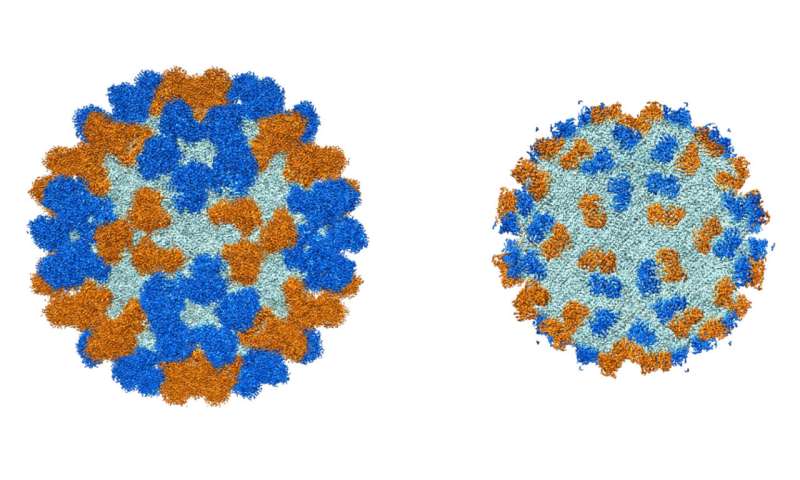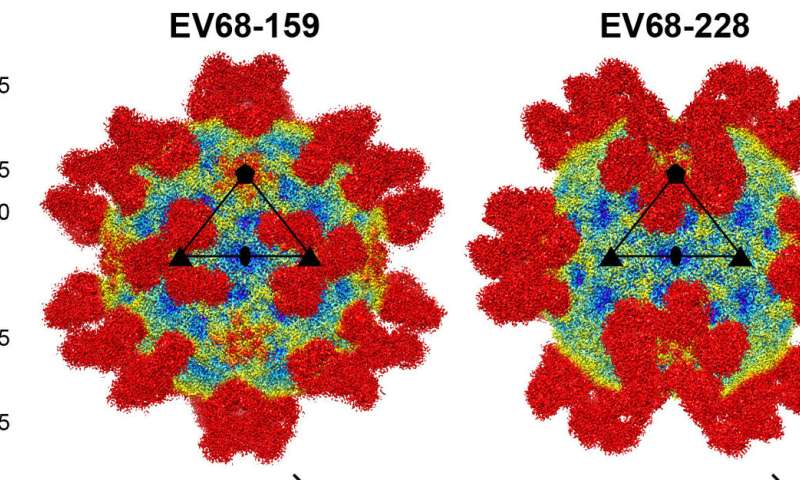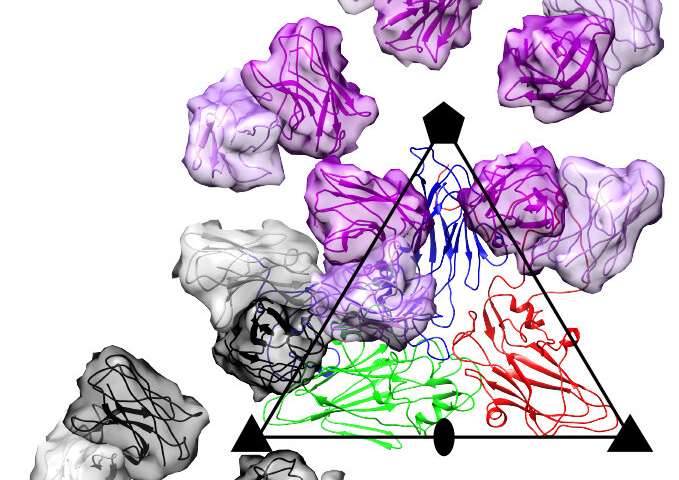
Researchers at Vanderbilt University Medical Center, Purdue University and the University of Wisconsin-Madison have isolated human monoclonal antibodies that potentially can prevent a rare but devastating polio-like illness in children linked to a respiratory viral infection.
The illness, called acute flaccid myelitis (AFM), causes sudden weakness in the arms and legs following a fever or respiratory illness. More than 600 cases have been identified since the U.S. Centers for Disease Control and Prevention began tracking the disease in 2014.
There is no specific treatment for AFM, which tends to strike in the late summer or early fall and which has been associated with some deaths. However, the disease has recently been linked to a group of respiratory viruses called enterovirus D68 (EV-D68).
Researchers at the Vanderbilt Vaccine Center isolated antibody-producing blood cells from the blood of children who had previously been infected by EV-D68. By fusing the blood cells to fast-growing myeloma cells, the researchers were able to generate a panel of monoclonal antibodies that potently neutralized the virus in laboratory studies.
Colleagues at Purdue determined the structure of the antibodies, which shed light on how they specifically recognize and bind to EV-D68. One of the antibodies protected mice from respiratory and neurologic disease when given either before or after infection by the enterovirus.
 “Footprints” of where potently neutralizing antibodies (gold and blue) from the body bind to antigen fragments on enterovirus D68. Credit: Vogt et al., Sci. Immunol. 5, eaba4902 (2020)
“Footprints” of where potently neutralizing antibodies (gold and blue) from the body bind to antigen fragments on enterovirus D68. Credit: Vogt et al., Sci. Immunol. 5, eaba4902 (2020) Maps of strain-specific neutralizing antibody EV68-159 (left) and broadly neutralizing antibody EV68-228 (right) bound to viral proteins on enterovirus D68. Credit: Vogt et al., Sci. Immunol. 5, eaba4902 (2020)
Maps of strain-specific neutralizing antibody EV68-159 (left) and broadly neutralizing antibody EV68-228 (right) bound to viral proteins on enterovirus D68. Credit: Vogt et al., Sci. Immunol. 5, eaba4902 (2020) “Footprints” of where potently neutralizing antibodies (gold and blue) from the body bind to antigen fragments on enterovirus D68. Credit: Vogt et al., Sci. Immunol. 5, eaba4902 (2020)
“Footprints” of where potently neutralizing antibodies (gold and blue) from the body bind to antigen fragments on enterovirus D68. Credit: Vogt et al., Sci. Immunol. 5, eaba4902 (2020) Maps of strain-specific neutralizing antibody EV68-159 (left) and broadly neutralizing antibody EV68-228 (right) bound to viral proteins on enterovirus D68. Credit: Vogt et al., Sci. Immunol. 5, eaba4902 (2020)
Maps of strain-specific neutralizing antibody EV68-159 (left) and broadly neutralizing antibody EV68-228 (right) bound to viral proteins on enterovirus D68. Credit: Vogt et al., Sci. Immunol. 5, eaba4902 (2020)
“We were excited to isolate potent human antibodies that inhibit this devastating polio-like virus, and these studies will form the basis for taking them forward to clinical trials,” said Dr. James Crowe, director, Vanderbilt Vaccine Center; Ann Scott Carell Chair and professor of Pediatrics and Pathology, Microbiology and Immunology in the Vanderbilt University School of Medicine.

“Studying infectious disease from a very basic level and applying the results in an animal model of disease is very powerful; hopefully, our studies will translate to a future therapeutic for this disease in children,” said Richard Kuhn, Purdue’s Trent and Judith Anderson Distinguished Professor in Science; Krenicki Family Director, Purdue Institute of Inflammation, Immunology and Infectious Disease.
Purdue University

